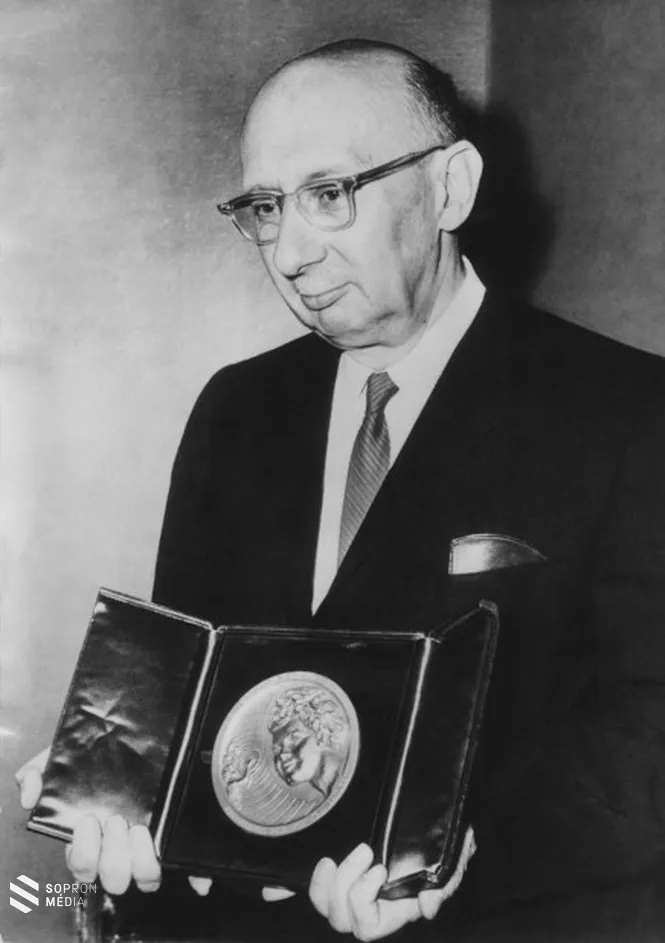With the help of the application, everyone can test their hearing with their own smartphone
On World Hearing Day, March 3, the World Health Organization, WHO, draws attention to the benefits of using your own hearing monitor.
With the help of the application, everyone can test their hearing with their own smartphone, said Shelly Chadha, a staff member of the WHO Department of Hearing Loss.
According to him, every fifteen people worldwide are considered hearing impaired. And three out of every four children experience one or more ear infections before their fifth birthday, which, if neglected, can lead to chronic hearing problems, deafness, or even life-threatening complications.
According to the WHO expert, hearing problems are unfortunately often not diagnosed early. In many countries, there are not even enough otolaryngologists to perform the task. WHO would therefore focus on training GPs and hospital staff to routinely test for hearing problems.
On this occasion, it is worth commemorating the life journey of a world-famous Hungarian scientist who was a leading researcher in the physiology of hearing. Just one hundred years ago, he received his doctorate at the Péter Pázmány University in Budapest.
Besides Albert Szentgyörgyi Békésy, he is the second researcher to be awarded the prize for his basic research in Hungary. After 1948, his name was hushed up in his country for a long time, while his life path was split in two. He lived in Hungary until 1946, then in Stockholm, and later in the United States.

György Békéssy with the Nobel Prize Photo: Getty Images
His parents got married in Pécs in 1898. His father was from Cluj and his mother from Slavonia. He spoke Hungarian with his father and German with his mother. His father obtained a doctorate in humanities, but became a chief inspector in the Ministry of Trade, a correspondent in Munich in 1900, and then an embassy employee in Constantinople and Zurich in 1910. We find it in Bern in 1915/1916, then returned to Budapest via Prague. His mother, Paula Mazaly, lost her husband in 1923, but she remained the engine of the family.
The various stations indicate where György Békésy went to school. He received the most uniform training at the elementary school in Munich. He then attended the Ágoston tér school in Pécs, where he completed the 4th grade.
This was followed by the years in Istanbul, where he attended a French-language high school, and in 1913 he continued his studies in Budapest at the Werböczy high school in Attila út. This was followed by Zurich and Bern, where he mastered the material of four classes in two and a half years as a private student. He graduated in the fall of 1916. After a six-month apprenticeship as a watchmaker and instrument maker - where he actually learned to repair - he became a student at the University of Bern in 1917.
After a short domestic military service, he was discharged with great difficulty. After the First World War, we find it again in Switzerland in 1918. In the summer of 1921, he graduated with an honors degree in chemistry. In 1923, he obtained a doctorate in physics from Károly Tangl (1869–1940) at the Pázmány Péter University of Science in Budapest. A short version of his doctoral dissertation was published in a German journal in 1927.
The period between 1923 and 1927 was spent looking for a job. He worked for a short time at the Süss company, and unsuccessfully applied for Zeiss in Jena, and at the Research Laboratory of the Uzüste Izzo in Budapest. In the winter of 1924, he worked at the Posta Kísérleti Allomás, thanks to director Bernát Paskay, where he could research to his heart's content after his work obligations. Then in 1925 he received a Siemens scholarship. It was then that he began to deal with the anatomy and physics of the middle and inner ear.
With his second, he developed the all-encompassing acoustic system, which ranged from the determination of the room's reverberation time to the determination of the characteristics of the electroacoustic devices and their placement. In the 1930s, he carried out the acoustic design of the Hungarian Radio studios.
János Schimert, the young assistant professor, was entrusted to the Department of Anatomy of Pázmány Péter University's Faculty of Medicine. We know him as János Szentágothai (1912–1994). "I couldn't answer the questions he asked," said Professor Szentágothai, who later became an academician, in his lecture at the University of Pécs in 1962.
Békésy was allowed to take the human heads home with a special permit, so he performed the dissection of the inner ear at home.
He continuously published his hearing-related papers, which were also noticed by the international public.
In 1931, the German Oncological Society awarded him the Denker Prize. In 1933, he became a private university teacher. In 1937, he was awarded the Leopoldina Leibniz Medal, and in 1939, the University of Groningen awarded him the Guyot Prize. In 1939, he was elected a corresponding member of the Hungarian Academy of Sciences. On February 9, 1940, he gave his inaugural lecture entitled "Technical significance and measurement of vibration sensation". That same year, he was entrusted with the leadership of the University's Department of Applied Physics. On April 30, 1944, an American bomb hit destroyed its postal laboratory. In 1946, he became a regular member of the Hungarian Academy of Sciences.
In 1946/47 he worked in Sweden, then in 1948 he went to Harvard University. He did research here until 1966. He established the Laboratory of the Physiology of the Sense Organs in the basement of Memorial Hall. Here he built faithful mechanical models of the functioning of the ear, which proved his theory of hearing.
In 1967, the Leopoldina, the German Academy of Natural Sciences, held a festive meeting in his honor. He was awarded an honorary doctorate by several universities.
However, his recognition in Hungary was waiting for him. In 1969, Semmelweis University of Medicine in Budapest made him an honorary doctor. He received the diploma at the embassy in Washington.
He worked in Honolulu in his last years. He died on June 13, 1972. His ashes were scattered in the Pacific Ocean in accordance with his last will.
On June 4, 1979, his memorial plaque in Ferencváros, Budapest, was inaugurated in the presence of his younger brother Miklós and his family. His academic rehabilitation took place 8 years after his death.
On December 1, 1995, the Postal Museum was opened in Diósd, in its two halls dr. Békésy's experimental equipment returned home from the University of Hawaii.
In 1999, his bust was unveiled on the Péter Pázmány promenade in Budapest.
Békésy was a reserved type of person with amazing experimental skills and abilities, who was more interested in his career as a laboratory researcher than in public appearances. He never married.
It is difficult to summarize his scientific work covering a wide area.
He was a thorough researcher, and for the first time he became familiar with the anatomy of the ear. With long work, he prepared the auditory horn (helicotrema, Eustachian horn), a three-step-like passage that meets at the tip of the cochlea. Then, developing the technique of preparing the anatomical parts of the cochlea, he was the first to see the so-called basement membrane and recognized its complicated forms of vibration, measuring vibration amplitudes that were barely a thousandth of a millimeter.
He was the first to write about the snail and its mechanical operation as a frequency analyzer. He made a physical model of it.
Before the second continuous experimental phase, he constructed his automatic hearing testing device in Stockholm, which is known in the literature and medical practice as the Békésy audiometer.
On July 6, 2011, in Pécs, at the entrance wall of the former Ágoston tér elementary school, mayor Zsolt Páva and József Bódis, rector of the University of Pécs, unveiled the Békésy monument on behalf of the local professors.
Source: magyarhirlap.hu, felvidek.ma
Opening image: Facebook












